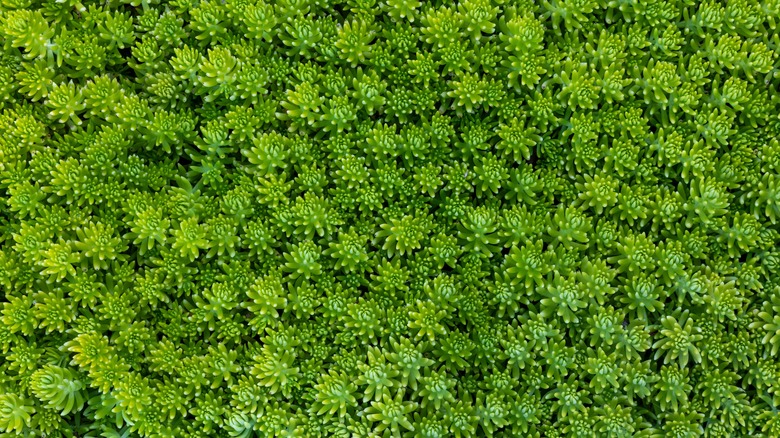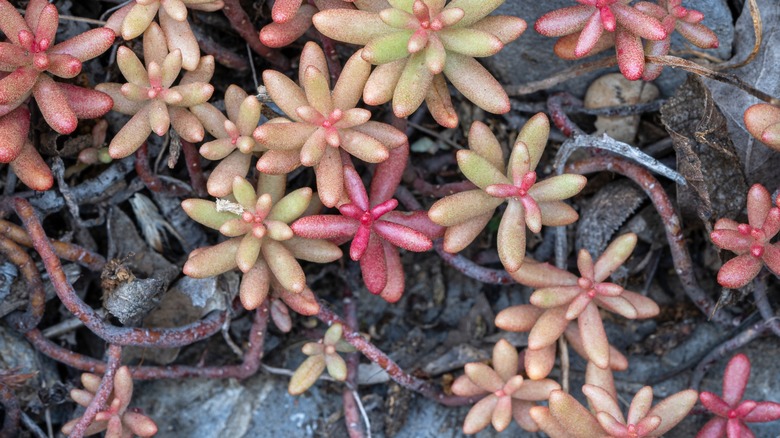Signs Your Creeping Sedum Ground Cover Is Dying (And What To Do About It)
Sedum is the genus for a group of succulents that can be used in and outside your home. And out of the hundreds of species that fit under its umbrella, there are several sedum ground cover varieties that fit nicely in your yard. While creeping sedum ground cover is drought-tolerant and quickly adds an interesting element to your landscape, there are signs you should be aware of that show your plants are struggling. Brown, black, or yellow, or wilting or squishy leaves on your sedum means there could be a problem or two you need to address. Other indications that your sedum is in trouble are bad odors, curling leaves, and dark spots.
To save your plant, you must get to the root of the problem. Some issues killing your plant could spread, so it's best to identify the issue promptly and nip it in the bud. Yellow or brown leaves could mean your sedum has mildew, root rot, or leaf spot. Look at the other leaves closely. Is there a white covering that looks like sprinkled baby powder? That's probably powdery mildew, which spreads via spores and can affect not only your sedum but your other plants as well.
If that's not the issue and you have yellow, brown, or wilting leaves, look for dark spots. Those could indicate leaf spot, a fungal disease. Mushy, black, wilting, or brown stems could be stem rot — also a fungal issue. And a smelly plant with discolored or wilting stems or roots could indicate bacterial crown rot is your problem.
Saving your ground cover
Once you've identified why your creeping sedum ground cover is dying, it's time for solutions. Address powdery mildew by removing any dying pieces of sedum right away and treating the rest of the plant to stop it from spreading. Cut the infected leaves off with clean shears and throw them away in the garbage — not the compost pile. That's because the fungus will spread. While you can use a fungicide to remove the mildew, a 1:2 mixture of turmeric to wood ash is also an option and hydrogen peroxide can control powdery mildew, too.
Root rot and crown rot happen because of either overwatering or soil that stays too wet. While sedum thrives in poor soil, it must be well drained. Your best course of action there is to remove the affected plant, fix the soil to help it drain better, and replace the removed portion with a new plant. However, early detection could save your plant. Remove the affected parts, leaving only healthy portions, and replant in your improved soil. Stem rot results from overwatering or high humidity due to overcrowding. In this case, remove the affected stems, make sure the air can circulate around them, and ensure your soil drains well. Use this same solution for the leaf spot problem wreaking havoc on your plant. Identifying these issues early is the key to effective treatment, so keep an eye on your creeping sedum ground cover to ensure it stays healthy and beautiful.

